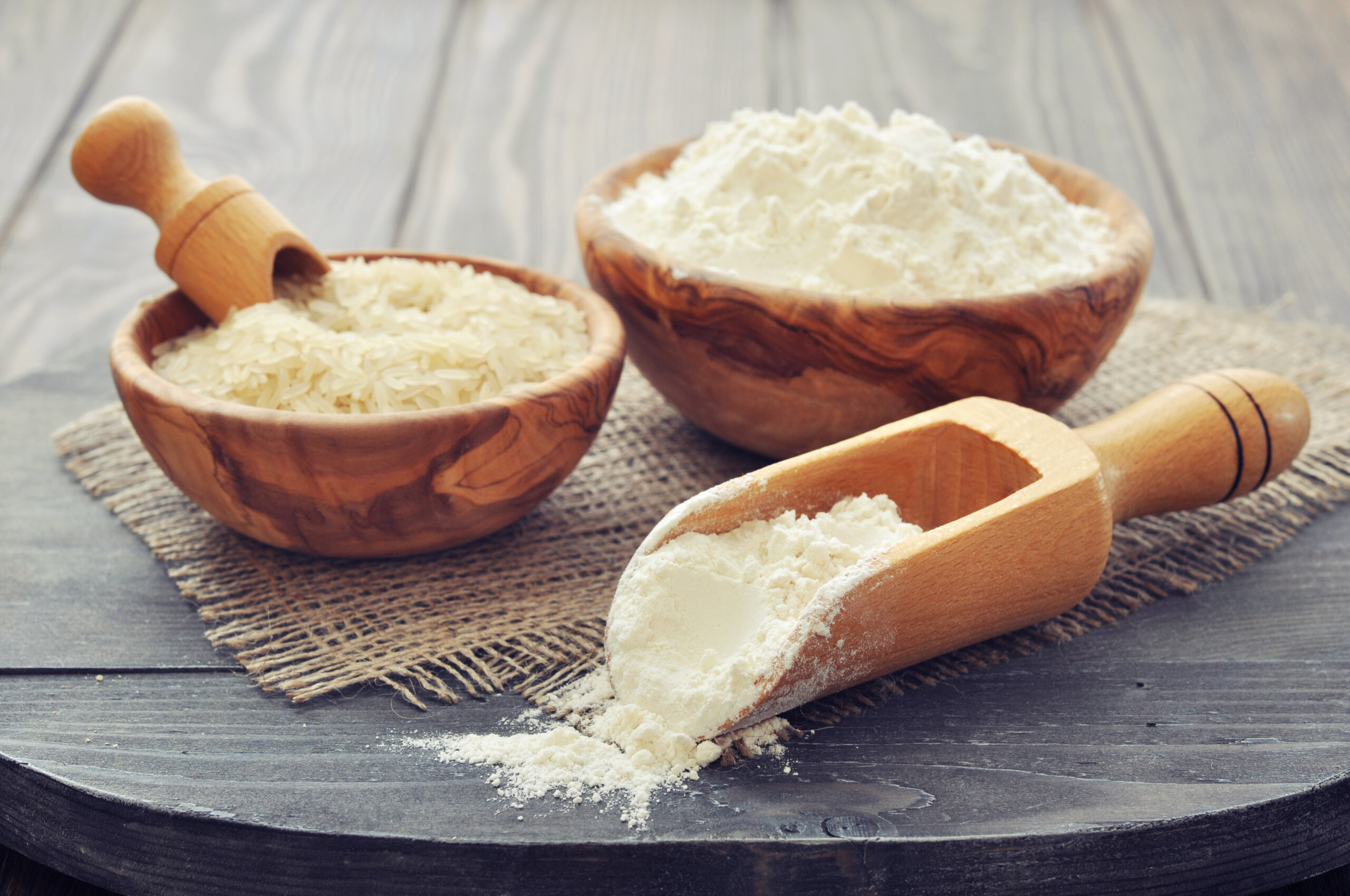Rice flour (also rice powder) is a form of flour made from rice. It is distinct from rice starch, which is usually produced by steeping rice in lye. Rice flour is a particularly good substitute for wheat flour, which causes irritation in the digestive systems of those who are gluten-intolerant. Rice flour is also used as a thickening agent in recipes that are refrigerated or frozen since it inhibits liquid separation.
There is a high demand for acceptable gluten-free foods that provide greater protein. The worldwide Rice Flour market size was USD 12490 million and it is expected to reach USD 16190 million by the end of 2026, with a CAGR of 3.7% During 2020-2026.
In the UK, producers have been working around the clock to address the Flour Shortage during recent months, as flour became one of the first products to be snapped up by consumers as they went into lockdown.
Here is a quick overview of the different types of rice flour:
- White Rice Flour – Made from polished white rice, white rice flour is the finest and lightest of the varieties. Unlike other types of rice flour, you can easily bake with white rice flour as the only flour and it works well as a direct replacement for wheat flour.
- Brown Rice Flour – This type of rice flour is made from brown rice – rice that has not had the outer bran removed. Brown rice flour is heavier than white rice flour and has a slight nutty flavor. It is rich in fiber and protein and works well as a thickener or for dredging meats and fried foods. It behaves differently than wheat so is best used with other flours for baking.
- Glutinous Rice Flour – Though the name might lead you to think otherwise, glutinous rice flour does not contain gluten. The term “glutinous” is simply used to describe the stickiness of the rice when it is cooked. The Japanese term for glutinous rice flour is “mochigomeko” and it is used to make mochi. This flour is also known as “mochiko” or sweet rice flour.
Ingenious Uses of Rice Flour
Researchers are studying new methods of processing rice flour and new methods of predicting rice flour characteristics. Rice and maize flours, along with various techniques or additives have also been applied to improve physicochemical properties, acceptance, and shelf life of dough and bread.
Satake Corp., a food processing company based in Japan, has developed a bread production method using rice flour that is capable of producing an equivalent texture to wheat flour bread without using any of the seven main allergens, such as wheat, mandatory to list, along with 21 others, on food products in Japan.
Whole Foods, an organic grocery store in San Francisco, have carried out a new plant-based bacon, which it announced in 300 of its stores. Hooray bacon is made primarily from coconut oil, rice flour, tapioca starch, liquid smoke, mushrooms, salt, maple syrup and beet juice.
Back in 2015, Rocha Parra developed an apple pomace-enriched formulation of GF baked product along with cassava starch and rice flour!
Bread from rice flour has long been studied and developed throughout Japan. Traditionally, however, bread made with rice flour alone has had a lower viscosity than that with wheat flour, therefore, it needed to be mixed with wheat-derived gluten to make the dough rise sufficiently for that wheat bread like texture.
Health Benefits
Rice flour has many properties that are advantageous for human health, such as high digestibility, low calories (low absorption potential of oil), and functional components, when compared to wheat flour
Rice flour is a key alternative to flour for minimizing food allergies, and many products based on rice flour, such as breads, cakes, and noodles, are commercially available. However, gluten is an important determinant of the texture of food products because its network structure holds air and provides elasticity.
Evolution of gluten-free flours
Complications arising from the elimination of the combined storage protein in wheat, barley, rye and oats mean there is no simple one-to-one substitution, creating a not-unreasonable perception that gluten-free production is difficult, time-consuming and costly. Close to a decade after its initial introduction, manufacturers continue to experiment with new ways to create delicious, more nutritious gluten-free baked goods.
We’ve come a long way in our understanding of how to use ingredient blends, especially starch blends, to better address flavor and texture a food stylist and recipe developer, works with a variety of manufacturers and food associations to keep innovation and accessibility at the forefront of food through the development of recipes and formulations using interesting gluten-free flours in creative ways.
You can click here to read more on our Rice Flour, or email us at sales@tradelinksa.com for more information!
[su_divider top=”no” divider_color=”#726c6d” size=”7″ margin=”5″]
[su_button url=”https://www.facebook.com/tradelinksainternational/?view_public_for=105757601162821″ target=”blank” style=”flat” size=”5″ icon=”icon: facebook-f” text_shadow=”0px 0px 0px #000000″] [/su_button] [su_button url=”https://www.linkedin.com/company/tradelink-sa/?viewAsMember=true” target=”blank” style=”flat” size=”5″ icon=”icon: linkedin” text_shadow=”0px 0px 0px #000000″] [/su_button] [su_button url=”https://www.instagram.com/tradelinknz/” target=”blank” style=”flat” size=”5″ icon=”icon: instagram” text_shadow=”0px 0px 0px #000000″] [/su_button] [su_button url=”https://www.youtube.com/channel/UCewEsyFy0Y_1MdjwhsXvT0w” target=”blank” style=”flat” size=”5″ icon=”icon: youtube” text_shadow=”0px 0px 0px #000000″] [/su_button]
[su_youtube_advanced url=”https://www.youtube.com/watch?v=LCEkNZdMi04″ height=”200″ responsive=”no” fs=”no”]



